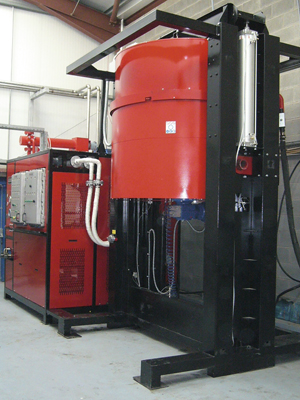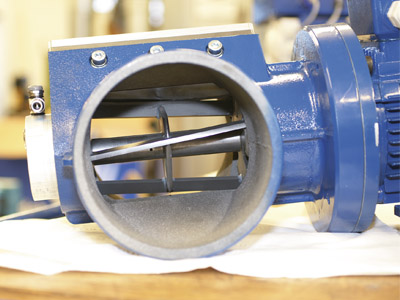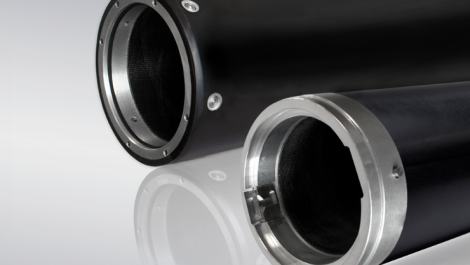Lundberg Tech develops and manufactures granulators and cutters
As consumers become more environmentally aware, brands want to appear more ecologically responsible to appeal to that consumer base. Labelling and packaging must become a part of that if brands want to be truly eco-friendly, Michal Lodej writes.
In a market as competitive as label and packaging printing, any flexo printer will need as much going for them as possible, and glowing green credentials could be an important factor. While investing money in facility or practice improvements is certainly not as exciting as splashing out on the latest press, it could not only win work, but save a business money in its day-to-day running.
Reducing the production of waste is primarily concentrated in the areas of improvements within the production processes such as ink and chemical management, press operation, investing in technology and machinery, software, and job changeover processes etc. However, no matter what strategies are put in place, waste production and in-house management will always be an inevitable by-product of printing processes.
As the need for more environmentally friendly methods of waste treatment and disposal becomes not just a legal, but moral business requirement throughout manufacturing, all waste producing businesses need to focus on their responsibilities and how they project this to their clients. Responsible waste management is being increasingly confirmed by brand owners and supermarkets, who are putting pressure up and down the supply chain to demonstrate their environmental policies.
Terrible waste
Jon Hutton, sales director, Prismm Environmental, said, ‘Unfortunately, around 70% of label printers’ ‘general bin-waste’ consists of core based matrix and set-up material. The majority of UK waste contractors can’t put this material through their treatment facilities due to its heavy construction and therefore all the printers general waste simply goes directly to landfill. Consequently, it is largely recognised that the UK Label Printing Industry has a poor record with regards its environmental credibility.
‘Add this to the confusion over changing regulations and how best to manage areas such as glassine papers, plastic packaging, PE and PP reels, cardboards, mixed papers, hazardous and controlled waste, WEEE [waste electrical and electronic equipment], metals and woods – and that doesn’t include containment, storage, compaction or baling options – and it becomes clear that expert advice is required.
Along with its Total Waste Management Programmes, Prismm heads various recycling and environmental initiatives, such as Zero Labels 2 Landill which diverts around 10,000 tonnes of label waste from landfill annually and Glassine2Reycling which works with printers to ensure their clients, the end-users, recycle their used glassine rolls.
The Zero Labels 2 landfill scheme is the only service that also supplies a certificate, approved and accredited by BPIF Labels.
Ensuring a label production site is maximising its environmental requirements whilst minimising costs can be a tricky process. Often the most environmentally sound options do not seem to make the most commercial sense. The limitations of the contractors being used, in-house methodology of waste storage and understanding of how to maximise material values will ultimately determine a business’s waste management position. The advice and knowledge from experts in this field provides a full spectrum of what is available and how to achieve it.
Looking inward
Of course, there are procedures printers can put in place themselves to improve their recycling abilities.
Lundberg Tech develops and manufactures granulators and cutters in addition to its own concept in the field of vacuum waste handling, covering, capture, cut, convey collect and compact waste of materials from all kind of process machines including paper, plastic, textile, non-woven, carton, laminates and similar.
The company can provide solutions for inline waste handling of matrix in the production of labels. The solutions are based upon special granulators and cutters containing a lubrication system and inside treatment of all parts conveying the waste, which allows materials with open glue to be cut and transported without sticking to the surface
Lundberg Tech can provide waste handling solutions by designing and installing central systems or supplying ‘All-in-one’ units and it also has solutions for waste handling of high-value items, which set the size of the waste required.
Kevin Harrison , regional sales director, said, ‘Ever since the establishment of Lundberg Tech, we have been committed to continued improvement of our performance in order to exceed our customer’s expectations and to fulfil our mission of bringing added value to each customer’s business.
‘To support this commitment, Lundberg Tech works closely with our customers and partners to jointly develop solutions that have a positive impact on lifetime operational costs and safety issues. From initial conceptual design to final on-site commissioning, Lundberg Tech’s staff is always committed to ensuring a close, proactive relationship with customers in order to optimise design and supply.
‘Safety, ethics and environmental concerns are incorporated in our products, making us a responsible business partner. In this ever-changing world with greater focus on the environment, Lundberg Tech systems can be designed to segregate the various waste steams enabling them to be separated for recycled.’
Cleaning
In many cases, flexographic printing presses are equipped with an automatic cleaning system. During each press cleaning cycle, a certain amount of clean solvent is used. More solvent is used depending on the number of colour changes and different printing jobs. Solvents are also used in the plate making process and these become contaminated with waste polymers. When the cost of new solvents and waste disposal are taken into consideration, solvent recycling becomes a genuine cost effective alternative.

Solutex supplies advanced solvent recycling systems
Solutex supplies advanced solvent recycling systems for use with new or existing flexographic printing presses and plate making operations. David Jones, director, said, ‘We offer fully automatic systems combined with solvent storage tanks that can be integrated into new or existing systems to provide a fully automatic cleaning cycle. Whether its ethanol/ethyl acetate print wash solvents or any type of plate making solvents, our systems
provide the complete answer with many advanced features.’
Some industry solutions remove the need for disposing of liquid waste. The Aeromaid anilox roller cleaning unit from Flexomaid, uses an absorbent paper mat beneath the role to collect the few drops of wet residue. A specially-designed conveyor automatically displaces the paper mat a few millimetres after every cleaning cycle, which can simply be placed in a standard waste bin.
Energy saving
The Carbon Trust estimates that UK manufacturing operations could reduce their energy consumption by as much as 20% just by implementing simple, inexpensive energy efficiency measures such as using variable-speed drives, fixing leaks in your compressed air systems, and cleaning your refrigeration condensers.
Another solution is to generate your own energy on site. In 2015, label-printer Watermill had an 111 kW solar power system fitted by Leeds Solar on the roof of its Pitcliffe Way headquarters, in West Bowling. This provided 75% of the factory’s future electricity demand and saved in the region of £20,000 a year in electricity bills when coupled with payments from the Government’s Feed-in Tariff scheme at the time.
Managing director, Dale Deacon, said, ‘For any business with a large roof, it makes complete commercial and environmental sense. Our production floor has a large number of the world’s most sophisticated label converting machinery that run for 12 hours per day, using a great deal of electricity.’
Read the full May issue here






